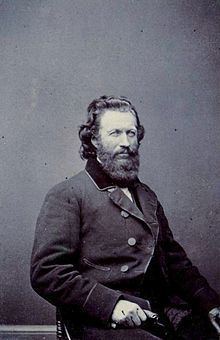Nationality American Died January 12, 1883 Role Sculptor | Name Clark Mills Known for Sculpture | |
 | ||
Born December 13, 1810 ( 1810-12-13 ) | ||
Clark mills sculptor
Clark Mills (December 13, 1810 – January 12, 1883) was an American sculptor, best known for four versions of an equestrian statue of Andrew Jackson, located in Washington, D.C. with replicas in Nashville, Tennessee, Jacksonville, Florida, and New Orleans, Louisiana.
Contents
Life
He had a studio, in Charleston, South Carolina, and Washington, D.C., at 15th Street, and Pennsylvania Avenue.
He had three sons; he remarried and had a stepdaughter. There was some dispute over his will.
He was interred at Glenwood Cemetery in Washington, D.C.
Works
In 1865 Mills made a life-cast of Abraham Lincoln's head. It is generally felt to be inferior in technical quality to the 1860 cast made by Leonard Volk, but has the advantage of showing Lincoln's entire skull, not just the face as does Volk's. One of Mills' works is located in President's Park, also known as Lafayette Square, which is situated on the north portico side of the White House. The statue of Andrew Jackson was unveiled January 8, 1853. It was a Saturday on the 38th anniversary of the Battle of New Orleans, and according to an account by a reporter for the Washington Union, twenty thousand people attended in and around the park. Senator Stephen A. Douglas was the keynote speaker at the unveiling. There are three other castings in New Orleans, Jacksonville, Florida, and Nashville, Tennessee.
Beginning in 1860, the Statue of Freedom, which sits atop the United States Capitol, was cast in five main sections by Mills, whose bronze foundry was located on the outskirts of Washington.
Mills also captured a tense and crucial moment in the American Revolutionary War with the creation of an equestrian statue of Lt. Gen. George Washington in 1860. Congress commissioned this work in 1853 because of the tremendous popularity of Mills' equestrian statue of Andrew Jackson. The elaborate high pedestal that Mills originally designed, with three tiers of sculptured relief panels and smaller equestrian statues of Washington's generals, were never executed because of a lack of adequate funds.
Honors
In World War II, the United States liberty ship SS Clark Mills was named in his honor.
